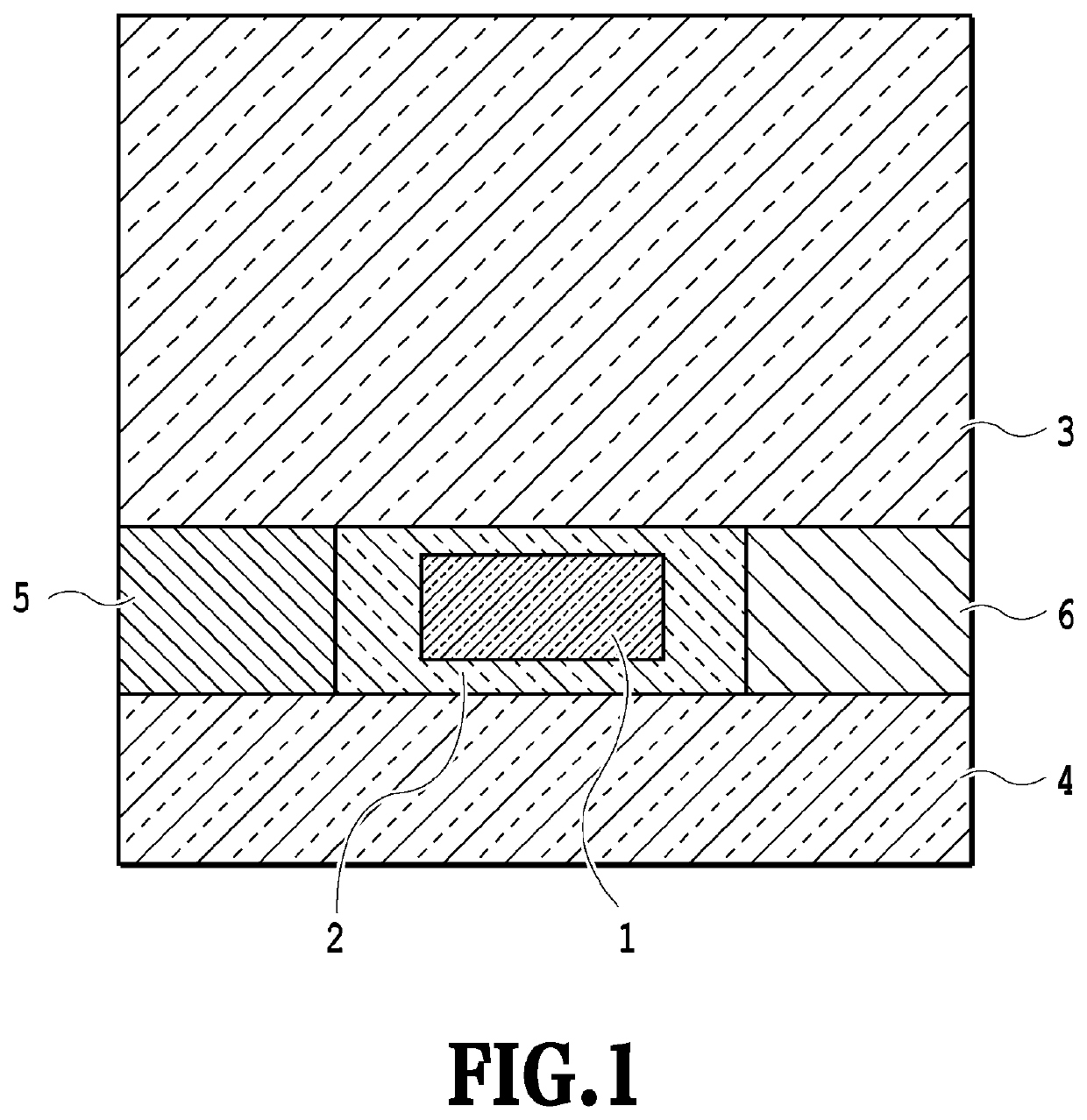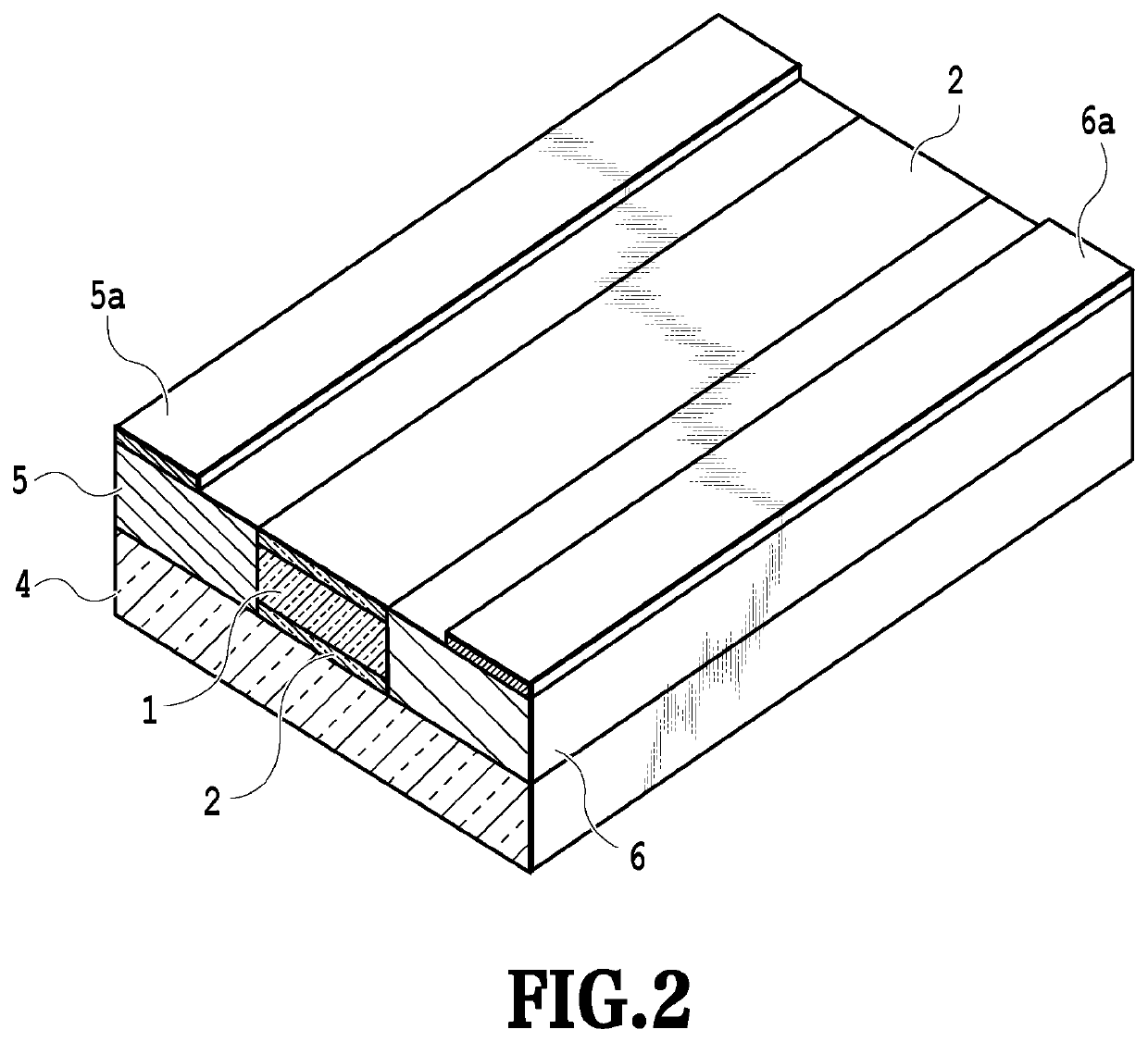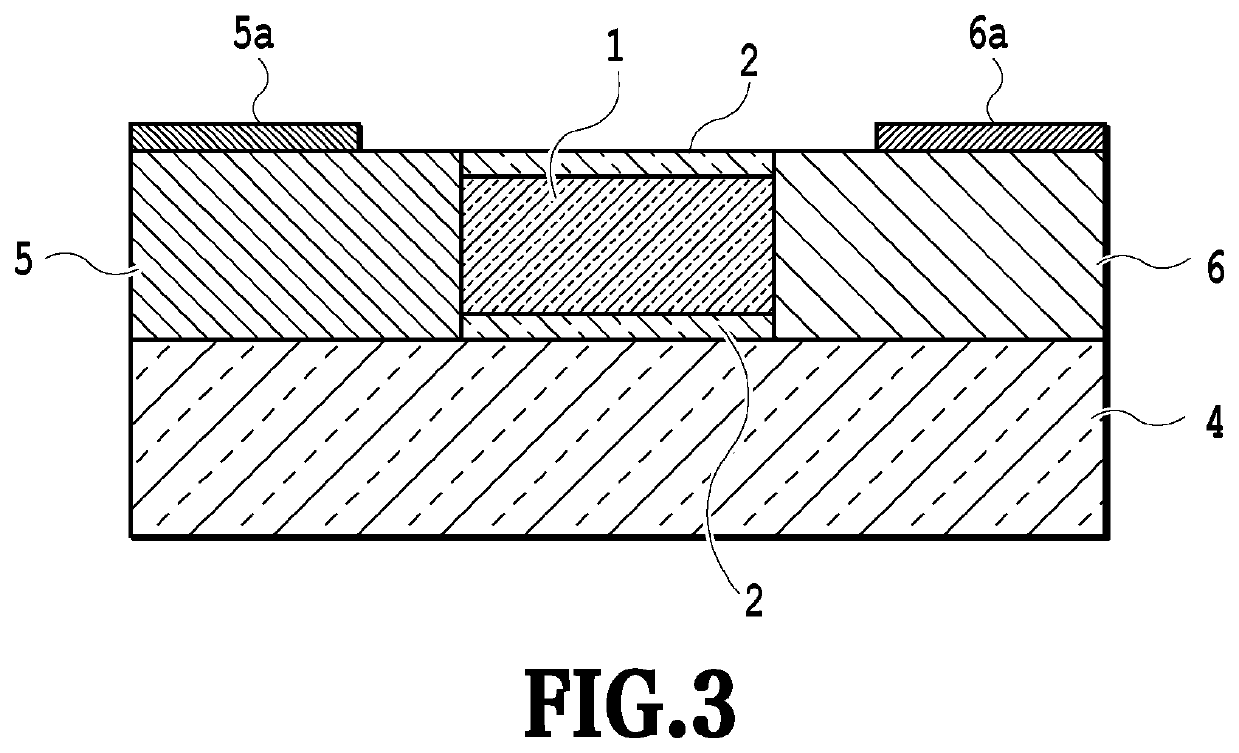Semiconductor optical device
a technology of semiconductor lasers and optical devices, applied in semiconductor lasers, lasers, laser details, etc., can solve the problems of inability to say that inp and gaas have good thermal conductivity, and limited characteristics, so as to achieve efficient injection of current or application of electric fields, high temperature processing
- Summary
- Abstract
- Description
- Claims
- Application Information
AI Technical Summary
Benefits of technology
Problems solved by technology
Method used
Image
Examples
example 1
[0066]FIG. 2 is a perspective view showing the structure of the semiconductor optical device according to Example 1 of the present invention. Example 1 of the present invention has a semiconductor laser structure in which current is injected approximately in parallel along the surface of the substrate from the cladding layer 5 to the cladding layer 6 with the active layer 1 sandwiched therebetween as shown in FIG. 2.
[0067]In FIG. 2, the active layer 1 is formed of, for example, InGaAlAs having different compositions as quantum well (MQW) and barrier layer materials, and the core layer (first core layer) is formed by embedding the active layer 1 vertically with the upper and lower optical semiconductor layers 2 (for example, i-InP). The p-type semiconductor layer (p-InP, first cladding layer) 5 and the n-type semiconductor layer (n-InP, second cladding layer) 6 are formed with the core layer sandwiched therebetween, and a contact layer and electrodes 5a and 6a are provided to inject ...
example 2
[0092]The structure of Example 2 of the present invention shown in FIG. 11 differs from that of Example 1 in that the lower cladding (third cladding layer) having a two-layer structure including the SiC substrate 4 and a SiO2 layer 111 is provided by forming the SiO2 layer 111 which is a thin insulating film between the upper layer including the active layer 1, the optical semiconductor layers 2 and the p-type and n-type semiconductor cladding layers 5, 6, and the SiC substrate 4. An insulating film such as the SiO2 layer 111 is considered important in order to suppress void formation at the bonding interface in certain substrate bonding methods.
[0093]This structure of Example 2 shown in FIG. 11 has the two-layer structure in which the lower cladding (third cladding layer) is made of two different materials. One of the two types of materials constituting the third cladding layer is a semiconductor having a large thermal conductivity (SiC being a compound semiconductor), and the othe...
example 3
[0099]FIG. 14 is a cross-sectional structural view of a semiconductor optical device according to Example 3 of the present invention. FIG. 15 is a cross-sectional structural view of a conventionally used semiconductor optical device shown as Comparative Example 2 in comparison with Example 3.
[0100]As shown in FIG. 14, the structure of Example 3 has a first feature such that the upper structure includes a p-type semiconductor layer 5 (first cladding layer) and an n-type semiconductor layer 6 (second cladding layer) which are formed so as to vertically sandwich the multiple quantum well active layer 1 and the optical semiconductor layer 2 to be the first core layer in the thicknesswise direction of the substrate.
[0101]Furthermore, Example 3 has a second feature such that the lower third cladding layer is formed to have a two-layer structure including the SiO2 layer 111 to be the insulating layer and the SiC substrate 4 which serves as the cladding layer and the supporting substrate as...
PUM
| Property | Measurement | Unit |
|---|---|---|
| thickness | aaaaa | aaaaa |
| thickness | aaaaa | aaaaa |
| thickness | aaaaa | aaaaa |
Abstract
Description
Claims
Application Information
 Login to View More
Login to View More - R&D
- Intellectual Property
- Life Sciences
- Materials
- Tech Scout
- Unparalleled Data Quality
- Higher Quality Content
- 60% Fewer Hallucinations
Browse by: Latest US Patents, China's latest patents, Technical Efficacy Thesaurus, Application Domain, Technology Topic, Popular Technical Reports.
© 2025 PatSnap. All rights reserved.Legal|Privacy policy|Modern Slavery Act Transparency Statement|Sitemap|About US| Contact US: help@patsnap.com



